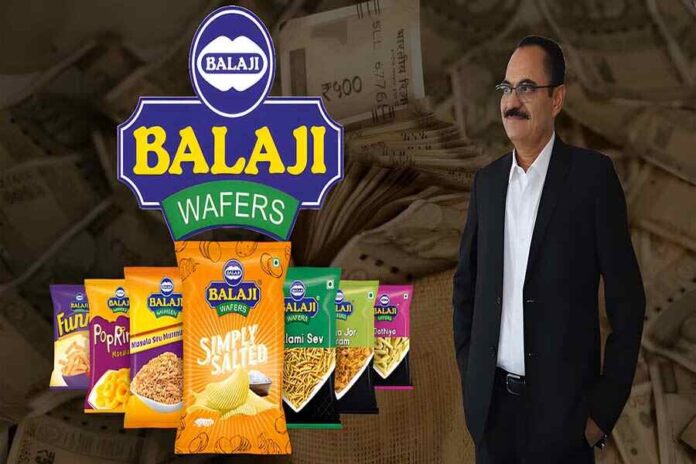In 1972, a farmer faced significant losses due to a drought in Gujarat, prompting him to sell his land and give his son, Chandubhai Virani, a mere ₹10,000. With no rain in sight and dire circumstances, Chandubhai’s father believed selling the land was the only viable option. Subsequently, Chandubhai started selling snacks outside the famous Astron Cinema in Rajkot. Initially, he sold sandwiches but faced the challenge of spoilage once they remained unsold.
Moreover, moviegoers had no option to carry snacks back home after the movie screenings. This situation led Chandubhai Virani to a stroke of entrepreneurial brilliance. He commenced selling potato chips for the first time in the cinema hall. With the initial funding from his father, Chandubhai set up a small-scale factory in his home to manufacture chips. Gradually, the quality of chips from his factory improved significantly.
Selling Chips Outside Cinema Halls
Chandubhai expanded his chip-selling enterprise to two more canteens near the cinema hall. Around 30 businessmen in Rajkot were indulging in Chandubhai Virani’s chips outside the cinema hall. Slowly but surely, Chandubhai’s business began to grow, prompting him to set up a larger factory outside his home.
Setting up a Factory with Borrowed Funds
In 1989, Chandubhai Virani borrowed ₹50 lakhs and established Gujarat’s largest potato chip factory. His focus was on quality, technology, and cleanliness. The results were visible in just a few days. Chandubhai set up a significant factory where 250 kilos of potato chips could be produced every hour. During this time, Chandubhai was earning ₹30,000 per month and desired to pursue this work full-time.
Inspired by a Hanuman Temple, the Birth of Balaji Wafers
In 1995, Chandubhai Virani founded Balaji Wafers, drawing inspiration from a Hanuman temple behind Astron Cinema. By then, the demand for chips had not only surged in Gujarat but across the country. Thereafter, Balaji Wafers diversified its products into other snack segments.
Rising Fame of Balaji Wafers
Thanks to the excellent taste of Chandubhai Virani’s chips, Balaji Wafers gained considerable popularity in Gujarat. By 2000, Balaji Wafers held a 90% share in the chip market and a 70% share in the snack market. They had over 100 distributors and 30,000 retailers, with their mega factory producing 1,200 kilos of chips every hour.
Expanding Beyond Gujarat
Chandubhai understood that for Balaji Wafers to grow bigger, it needed to venture beyond Gujarat. Consequently, Balaji Wafers started operations in Madhya Pradesh, Maharashtra, and Rajasthan. Chandubhai had distinct flavors tailored for each region, which contributed to Balaji Wafers’ success story outside Gujarat.
Balaji Wafers’ Growth and Overtaking Competitors
Balaji Wafers continued its expansion, gradually becoming a ₹1,000 crore company. To compete with Uncle Chips and Lays, Balaji started offering 25% extra chips in their packets. This strategy led to Pepsi acknowledging defeat in the market share battle.
Pepsi’s Acceptance of Defeat
Following this, Pepsi’s market share decreased by 10%. In 2013, Pepsi attempted to acquire Balaji Wafers for ₹4,000 crore. At that time, Balaji Wafers’ annual revenue stood at ₹1,800 crore. Chandubhai Virani, engrossed in larger plans, declined both Pepsi and later, an offer from the global FMCG giant Kellogg’s.
Balaji Wafers’ Revenue Hits ₹4,000 Crore
Today, Balaji Wafers earns a revenue of ₹4,000 crore annually. It boasts four major factories producing 6.5 million kilos of potatoes and 10 million kilos of snacks daily. Chandubhai Virani is also known as the Sultan of Wafers for his remarkable journey and the empire he’s built.

